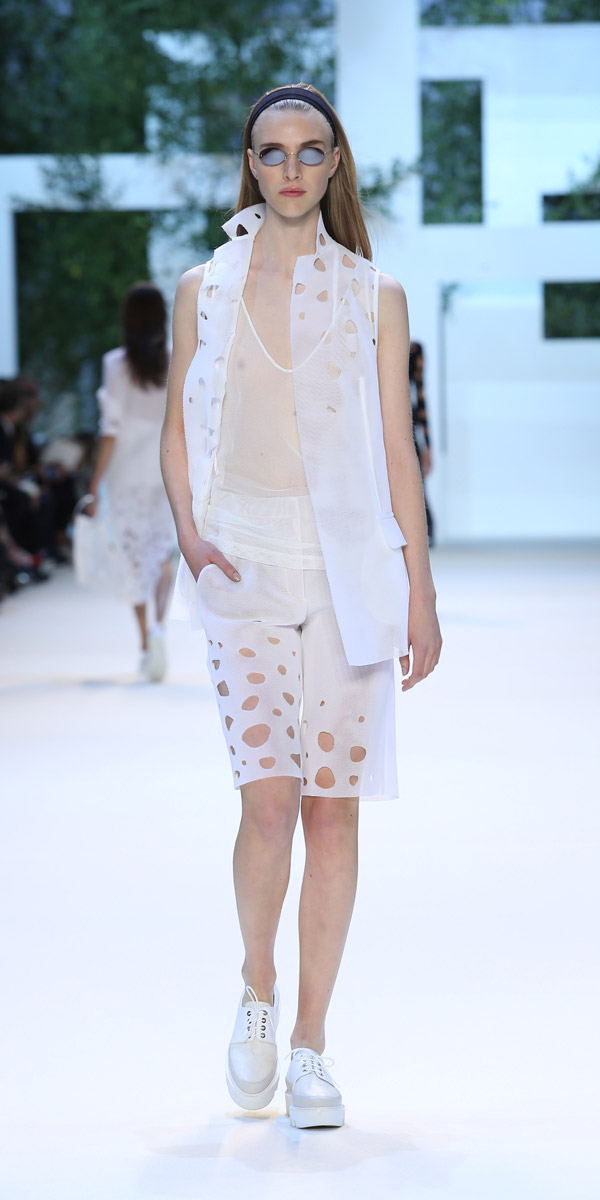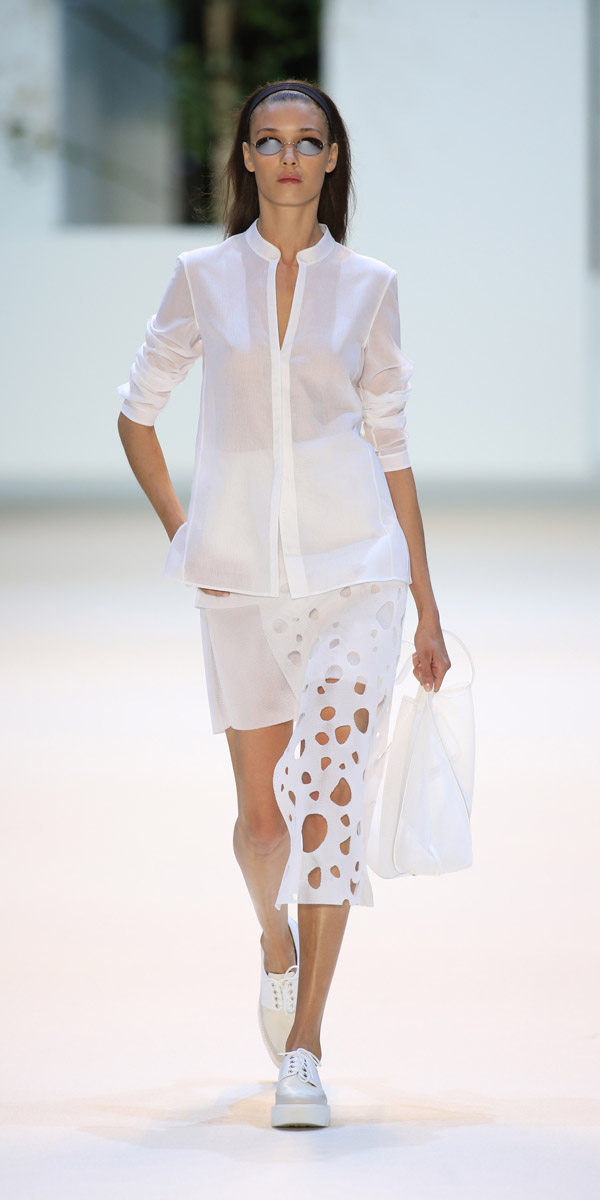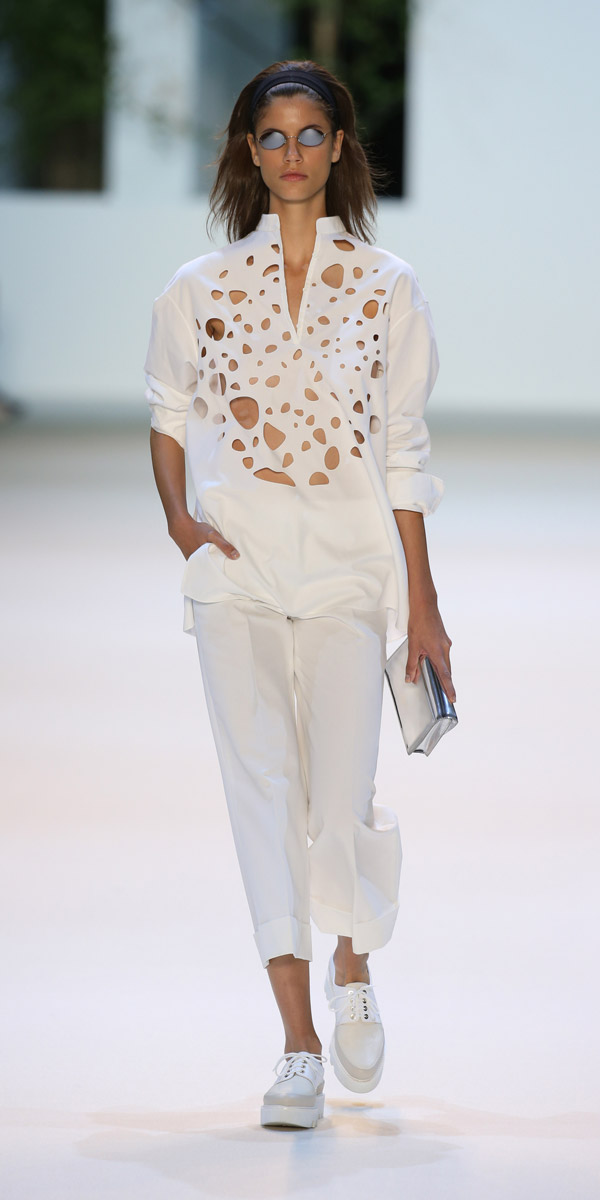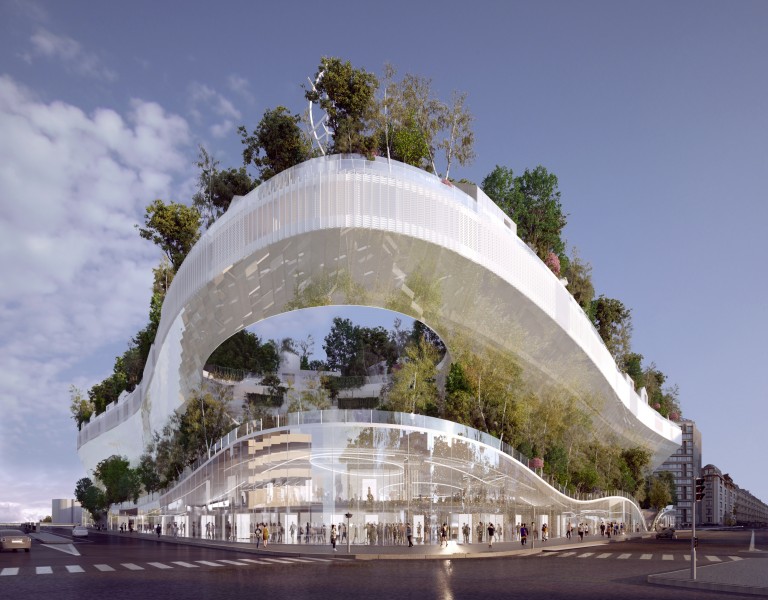DESIGN
Reinventing Paris with Sou Fujimoto
It is hard to overstate the influence of Japanese architect Sou Fujimoto on the world of design.
11 July, 2016
Just looking up for tall buildings would mean missing Fujimoto's mark in fashion, art and more.
At Paris Fashion Week, for example, the Switzerland-based fashion house Akris presented a 2016 Spring-Summer Collection of garments based on Sou Fujimoto's architectural work. The "Forest of Music" blouse reflects inspiration drawn from Fujimoto's work in Hungary, where he designed a music performance space planned for 2018 in Budapest City Park as part of one of the largest museum projects in Europe.
The mushroom-like structure – and the fashions – deliver that airy feel of barely-there buildings that Fujimoto designs in a creative range of materials and styles. In Budapest, that means glass walls and lightwells in a lightweight "smart" canopy that allows beams of sunlight to pool in the interior space.
The mushroom-like structure – and the fashions – deliver that airy feel of barely-there buildings that Fujimoto designs in a creative range of materials and styles. In Budapest, that means glass walls and lightwells in a lightweight "smart" canopy that allows beams of sunlight to pool in the interior space.
 |
 |
 |
Images: Akris
Fujimoto's use of aluminium cubes for a 2014 art installation in Paris is visible on the runway, too, in a casual two-piece outfit designed to capture the "Many Small Cubes" effect of nomadic structures that the architect aligned with nature in this inviting, open shelter. The livable art was made from hand-cut pieces of aluminium supported on a steel frame, with trees placed within it. According to Fujimoto, this layout "creates a new experience of space, a rhythm of flickering shadows and lights like the sun filtering through leafy trees." Because the cubes are reflective, they also mirrored colors, patterns and other images created by artist Patrick Rimoux that were beamed onto the carefully balanced surfaces from a nearby projector.
Whether in his artistic creations, or in his fully functional commercial and residential architectural work, Fujimoto designs buildings – often in geometric forms – that evoke a sense of texture in lattice and lace.
Whether in his artistic creations, or in his fully functional commercial and residential architectural work, Fujimoto designs buildings – often in geometric forms – that evoke a sense of texture in lattice and lace.
Images: Simone Bossi
That design signature is repeated in the Akris interpretation of the Naoshima Pavilion, in a technomesh skirt that shares its name with a temporary stainless-steel installation in Kagawa Prefecture, Japan. The pavilion is a centerpiece of this year's Setouchi Triennale 2016, an acclaimed three-season celebration of international art held on 12 Japanese islands of the Seto Inland Sea. The nearby Setonomori Houses, a series of 13 small cube homes nestled on a hillside, make a fashion statement as a two-piece ensemble – but as author Fred Bernstein notes, that fresh look is based on a Japanese style nearly 400 years old.

Image: Manal Rachdi OXO Architectes + Sou Fujimoto Architects
The Japanese rely less on permanent walls and single-purpose rooms filled with furniture, in part because of a history in which housing and décor featured sliding paper screens, mats and free space. Fujimoto and other Japanese architects embrace that design tradition today in wood, aluminium and other materials that, when applied to architectural concepts, deliver what Bernstein describes as jungle-gym dwellings. That's precisely the feel of the 2013 Serpentine Gallery Pavilion, a transparent structure constructed in a grid of white poles which was displayed at Kensington Gardens in London – and it's the look of a white Akris outfit that uses Fujimoto's red design sketches as detail in its matching bag, too.
Paris has not seen the last of Fujimoto's work. Reinventer.paris selected Fujimoto as one of 23 architects to build on selected sites across the city, and his winning "Mille Arbres" concept is slated for a city-owned plot designated as part of the Porte Maillot district renewal plan. The breathtaking concept weaves 1,000 trees into a sweeping bridge building that spans the road beneath while keeping the continuity of commitment to sustainability and innovation in its materials and intended purpose.
Paris has not seen the last of Fujimoto's work. Reinventer.paris selected Fujimoto as one of 23 architects to build on selected sites across the city, and his winning "Mille Arbres" concept is slated for a city-owned plot designated as part of the Porte Maillot district renewal plan. The breathtaking concept weaves 1,000 trees into a sweeping bridge building that spans the road beneath while keeping the continuity of commitment to sustainability and innovation in its materials and intended purpose.
Banner image: OXO Architectes